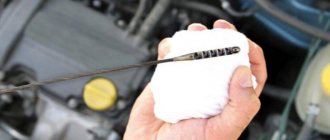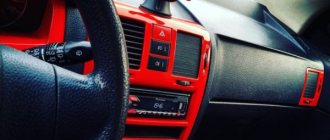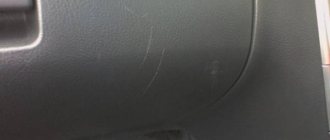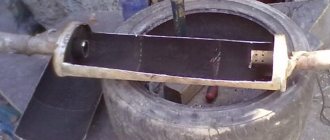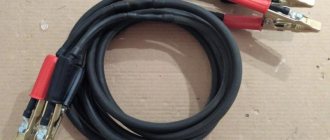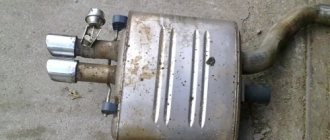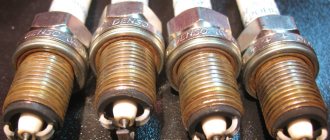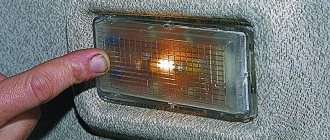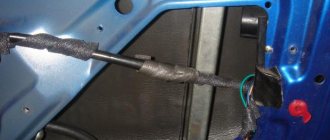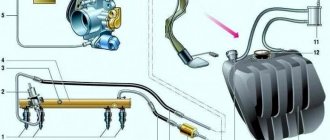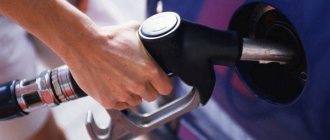The appearance of squeaks in the car interior distracts the driver’s attention and irritates him and his passengers. This problem is faced not only by owners of low-budget cars, but also by those who have purchased an expensive imported car. We analyzed the causes of extraneous noise and studied ways and means to combat them.
Headlining
To check, you can insert a plastic card into the slot of the panel that is under suspicion, and then take a ride and listen to see if the sound disappears.
To check, you can insert a plastic card into the slot of the panel that is under suspicion, and then take a ride and listen to see if the sound disappears.
It is better to carry out a more painstaking search with an assistant, who, while moving, begins to press different panels of the car with his hands, depriving them of mobility or at least changing the frequency of oscillations. Most often, in this way it is possible to localize vibrations at least to the accuracy of the upholstery part. Next, you can simply try to “polish” the part.
Causes of squeaking
Depending on the car model, the reasons that cause it to appear can be completely different. But the most common of them are the following:
- Presence of certain problems with the assembly;
- Low quality materials;
- Improper car care.
The quality of the assembly directly determines whether squeaking will appear in the car's interior in the future. in this matter, much may depend on the quality of the parts themselves. In any case, if the fasteners weakly fix the part, and the elements themselves do not fit together tightly, then sooner or later a creaking will still occur. As for the low quality of materials, this problem is typical for cheap cars. Such parts are less able to bear the loads during car operation, which is why unpleasant sounds begin to be made from the interior. In addition, if not properly maintained, squeaks may also occur. Here, for example, the reason for this may be improper treatment of the interior with chemicals.
crickets in the car
We will use a product for cleaning and polishing the upholstery, and apply the product especially generously to the junctions of this panel with others.
We will use a product for cleaning and polishing the upholstery, and apply the product especially generously to the junctions of this panel with others.
It is possible that this will be the end of all the creaking. The polish, once in the gap, eliminates dry friction and the sound stops. True, only for a while. If you want to solve the problem radically, then you will have to dismantle the panel and carefully inspect it. Areas that cause squeaking will be marked by abrasions and a thin layer of wear debris - plastic dust. Now, having seen the enemy in the face, begin the fight. You can stick double-sided tape to the contact point: the connection will subside, but will become conditionally inseparable. By gluing the Velcro halves to the mating parts, we will also stop the mutual movement of the parts, while maintaining the possibility of disassembling the connection. Many sources recommend using the advertised “fungal” Velcro, but it seems to me that there are no such commonly disassembled joints in the car.
Which cars are structurally more prone to squeaking and which are not? Examples are in the photo below.
Silicone lubricant-wax "Suprotek Aprokhim"
Like any other composition, silicone wax from Suprotek Aprokhim perfectly eliminates the so-called “crickets”. If you have a plastic-leather, plastic-plastic, plastic-metal joint that creaks somewhere in your car, then after applying wax in this place, the creaking disappears. Composition Suprotek - Aprohim is an excellent anti-creak for cars
. And at the same time, the composition, unlike many other similar products, does not leave greasy stains. This is not an unfounded statement. The famous autoblogger Konstantin Zarutsky - AcademeG specially conducted several tests:
Front panel of Chevrolet Lacetti
The Chevrolet Lacetti instrument panel is assembled from numerous plastic and metal parts on self-tapping screws.
After factory assembly it does not creak, but after the first disassembly? The Chevrolet Lacetti instrument panel is assembled from numerous plastic and metal parts on self-tapping screws. After factory assembly it does not creak, but after the first disassembly?
Car doors experience stress not only when driving, but also when passengers do not close them carefully. Therefore, door trims may begin to creak even with low mileage.
What causes creaking and rattling noises?
The machine parts are connected to the body and to each other by various types of fasteners. In case of warping and loose fit, extraneous noise appears - crickets. Also, squeaks can occur when the design is poorly designed, as in the suspension of the Kia Sportage or Toyota Camry or Corolla.
Incorrectly selected support points and exposure to vibration weaken the fastening of parts. Noises appear more often in prefabricated structures with a large number of elements.
The increase in noise level is influenced by the low quality of materials used in the construction of the car.
In the steering column
If you hear a creaking noise while driving, then a possible reason is friction between the main pipes. When maneuvering a car, braking or accelerating, a knock in the steering wheel usually occurs due to the impact of the wiring harness on the plastic panel.
More often, this cause of noise is found in the VAZ 2114, 2115, Grant and Lada Vesta models, as well as in foreign cars Nissan Qashqai and Chevrolet Cruze. It is possible for the key ring to jingle on the hard plastic of the dashboard. Creaking sometimes occurs due to poor lubrication of steering column parts.
Read also: Internal door panels
Doors from below
During the cold season, crickets appear in the speaker installation pockets. The clips on which the audio system equipment is attached creak. Also, after prolonged use, the tightness of the doors deteriorates, and a grinding noise appears while driving at speed. Dirt and dust adhering to the seal can cause noise and vibration from the air flow.
Panels
The material of plastic parts usually changes shape and warps due to temperature changes. The friction of deformed parts of the casing is accompanied by creaking and rattling when driving. If you turn on the stove, the crickets often disappear. Noises sometimes appear after reinstalling trim parts.
Plastic surfaces creak at the point of contact between themselves and the car body.
Crickets in the front panel of a car do not lead to serious consequences, but they irritate drivers and passengers. Extraneous sounds from the friction of panels are often found in the Chevrolet Lacetti sedan, BMW X6 and Lexus RX models.
Rear seats
The creaking of seats and backs occurs due to loose metal fasteners. Periodic folding of the row wears out the leather upholstery and mechanism parts. The fasteners come loose, the seat clamps for the stroller begin to wobble, and the headrest pins start to wobble.
Creaking seats
Creaks can occur both when passengers board and when the vehicle is moving. Rear seat noises are common in Renault Captura and Mazda CX-5 cars.
Seat belt buttons
The fastener fixation mechanism is spring-loaded and becomes loose during use. A loose fit of the fastening in the lock provokes a rattling sound. The noise usually comes from the plastic seat belt button.
The main reason is the loss of the part’s shape and poor fit to the walls of the mechanism. Also, weakening the spring can lead to the button falling off and causing rattling noises on the road. The seat belt buckle may also become loose in the buckle mechanism that is worn out.
Side shelves in the trunk
Sometimes, during the operation of the car, parts that are attached directly to the car body begin to creak and rattle. The reason is poor contact at the connection point. The balcony trunk shelves begin to rub against the car body and make a creaking sound. The cause of noise may also be warping of parts due to temperature changes.
Trunk shelf
Knocks and rattling noises in the rear of the car are caused by the lid covering the luggage compartment.
The reason for the noise is friction at the joints and rattling at the fastening site.
Most of the parts that make up the trunk shelf are plastic. Therefore, over time they lose their shape and do not adhere tightly to the surface. More often, knocking and rattling occurs in the Volkswagen Polo, Prado 150 and Renault Logan models.
Door trim
During long-term operation of the vehicle, due to shock and vibration, the fastening of parts to the body is weakened. Usually plastic, fabric and leather upholstery of the car is on clips. These fasteners may break or pop out of their groove.
The door trim begins to rattle and knock when the car moves. If maintenance is not carried out on time, you will have to remove the door trim and replace all the clips. This unpleasant sound is found in the Toyota RAV4 and Hyundai Creta and even in the 2022 Mercedes Benz,
Window lifter handles
Rotating parts and levers made of plastic lose their original shape over time. Sometimes there is no good contact between the elements and the metal mechanism. There is play and rattling in the window lifter handles while driving the car.
If the cause is not eliminated, the sounds become louder, and the part may break off when trying to open the window. Sometimes the noise does not come from the window lifter handle, but from improper installation of the cable. Creaking is more common in the Skoda Rapid model
In the steering when starting and braking
Sometimes when accelerating, making a sudden stop, or on bumps, a knocking sound is heard in the dashboard on the driver's side. This noise is usually made by the wiring harness. More often, the reason lies in the breakage of the screed fastening. But sometimes this is the result of poor quality vehicle assembly. Also, faults in the suspension can be reflected in the steering column. During maneuvers, shocks and vibrations are transmitted to the driver.
Glove compartment
Pockets in the car dashboard with a lid made entirely of plastic. Therefore, when temperature changes or connections wear out, creaking and rattling appears while driving. More often the hinges become loose and the glove compartment lid becomes skewed. But sometimes the cause of increased noise is warping of other plastic parts of the box due to the operation of the air conditioner.
Lada Kalina and Granta
An example of a modern design approach.
Compared to the Kalina, the Granta has a number of front panel parts reduced from 52 to 39, and in the door trims - from 15 to 3. Fewer mating interior elements mean fewer reasons for the appearance of “crickets”. An example of a modern design approach. Compared to the Kalina, the Granta has a number of front panel parts reduced from 52 to 39, and in the door trims - from 15 to 3. Fewer mating interior elements mean fewer reasons for the appearance of “crickets”.
You can stick a film on all surfaces of the door trim to prevent squeaking. The pistons, having already been removed and installed several times, may also not provide proper pressure to the upholstery, and they themselves may creak in their holes. Such pistons must be replaced. The most radical way to attach door trim is to install one or more self-tapping screws. You should use metal screws, install them in inconspicuous places and close the heads with decorative plugs sold in hardware stores.
How do you deal with squeaks? Are you fighting at all? Share your experience, colleagues!
Quiet hour: fighting “crickets” in the car
How to eliminate a squeak
It often makes sense to use the above means in combination, since there can be many squeaking zones and the reasons for its occurrence are different. In addition, these materials improve the sealing of the car interior and improve the protection of the body from corrosion processes.
Doors
If a metallic grinding sound appears in the cabin while the car is moving, it is necessary to tighten the bolts of the door fastenings, locks and window lifting mechanisms, and then lubricate the door hinges. If the creaking does not disappear, the door must be disassembled and noise-insulating “Biplast” glued to the internal surfaces.
If you hear a rubber squeak, these are the seals at the top of the door. They need to be cleaned and degreased with a glass cleaner, and then coated with silicone grease.
Seats
If your car seats squeak, you need to lubricate the fastenings and put fabric covers on the seats. If grinding noise occurs in the belt latches due to contact with the plastic covering, they are also treated with silicone wax.
Rear shelf
Creaking usually occurs if the shelf is not secured (the Russian Lada often suffers from this). It is necessary to fix the structure more firmly and seal the joints with Madelin, or install a special rubber stop.
Craftsmen recommend using branded or homemade acoustic shelves for mounting audio devices. They are quite massive and are covered with anti-squeak, so they do not vibrate while driving over potholes.
Ceiling
How to get rid of a creaking ceiling in the cabin? Often its appearance is associated with friction of the upholstery on the window glass. To remove squeaks, cover the entire perimeter of the upholstery with “Madeline” film or edge it with felt, lubricate the fasteners and the rubber seal of the hatch with silicone.
Ways to eliminate "crickets"
Since the dashboard consists of several parts and is located closest to the driver, it is therefore the most common source of unwanted noise. While driving, it is the squeaks made by the dashboard that distract and irritate the driver or interfere with listening to music and communicating with passengers.
To eliminate vibration and sound, it is recommended to disassemble the panel, glue the component parts around the perimeter with sound-absorbing and hermetic seals, for example, Bitoplat, and carefully install everything back. Particular attention should be paid to those parts where the car radio or on-board computer is installed.
To prevent the car from squeaking
Today there are a great many options for dealing with unpleasant noises and grinding noises inside the car. However, there are several proven methods, the use of which for a long time guarantees getting rid of unpleasant background sounds and bringing long-awaited silence to the interior of your car. To do this you will need:
- Self-adhesive. Available on a one-sided sticky base and allows you to quickly remove panel squeaks. After peeling off, it may leave a sticky residue on the surface.
- Silicone Grease. Available in aerosol form. It dampens any squeaks well. Easy to use and allows you to cover parts even in hard-to-reach places.
- Rubber compressor. It is also created on the basis of silicone. It is highly effective, but attracts dust and gets dirty.
- Mounting foam. Used to increase the rigidity of thin plastic parts. A special sealant based on foam rubber and polyesters with an adhesive layer. Durable and durable.
- Velcro. Hook and loop system. Reliable and easy to use. They have weight restrictions.
- Fungi. They are presented in the form of a plate with mushroom-like outgrowths, which, when squeezed, are tightly fastened together, preventing rubbing parts or panels from rattling and creaking. Reusable, can be reused.
- Foam rubber. Used for internal sealing of parts and sound insulation.
Eliminating squeaks in the interior is one of the important points in the effective operation of a car. Not everyone can afford an expensive luxury car. But anyone can protect their iron horse from small troubles in the form of squeaking.
Extraneous sounds when braking
Creaking, squealing and grinding noises when braking indicate worn or dirty brake pads. If these sounds persist when new pads are installed, then the pads have an uneven surface. To correct this defect, it is recommended to drive a little with the hand brake lightly applied to grind in the brake pads.
If the car is equipped with an automatic transmission, then a grinding noise may occur when the gear selector is moved to position D. The car would move immediately, but the brakes are holding it (the situation when releasing the brake we move away, and the brake pads are still pressed to the disc provokes a squealing brakes).
Silicone wax against "crickets"
What to do when you want to solve a squeaking problem quickly and inexpensively? For example, you know that in winter the junction between the dashboard and the windshield begins to creak.
By the way, many claim that there is even a foam anti-creak
In winter it doesn’t help, supposedly in the cold it becomes stiff and stops performing its function. We are sure that this is very individual and depends on the make of the car.
So, if it creaks in this place, or at the junction of the radio with the dashboard, or in the area of the door pillars, then silicone wax can help. Use wax as an anti-squeak
— the advice is not new. Almost every driver has such a bottle of spray in the trunk. What could be simpler: spray a little and it’s in order. But ordinary wax leaves greasy stains. If such a composition gets on the light upholstery of the ceiling or seats, then it will be impossible to get rid of the dirt. And on plastic, the average wax leaves unpleasant greasy stains. Getting all these “joys” instead of squeaking is unlikely to make anyone happy.
